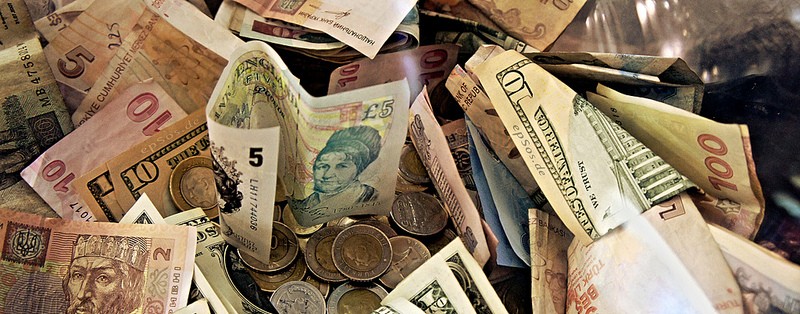No matter what new twist the Greek debt crisis takes, there can be no question that it has been a catastrophe for that country and for the entire Eurozone. The Greek economy contracted by over a quarter during the period of 2007 to 2013, the largest decline of any advanced economy since 1950. The Greek unemployment rate last year was 26.5%, and its youth unemployment rate of 52.4% was matched only by Spain’s. But who is responsible for these conditions depends very much on which perspective you take.
From a macroeconomic viewpoint, the Greek saga is one of austere budget polices imposed on the Greek government by the “troika” of the International Monetary Fund, the European Commission and the European Central Bank in an attempt to collect payment on the government’s debt. The first program, enacted in 2010 in response to Greece’s escalating budget deficits, called for fiscal consolidation to be achieved through cuts in government spending and higher taxes. The improvement in the primary budget position (which excludes interest payments) between 2010-11 was 8% of GDP, above its target. But real GDP, which was expected to drop between 2009 and 2012 by 5.5%, actually declined by 17%. The debt/GDP level, which was supposed to fall to about 155% by 2013, actually rose to 170% because of the severity of the contraction in output. The IMF subsequently published a report criticizing its participation in the 2010 program, including overly optimistic macroeconomic assumptions.
To address the continuing rise in the debt ratio, a new adjustment program was inaugurated in 2012, which included a writedown of Greek debt by 75%. Further cuts in public spending were to be made, as well as improvements in tax collection. But economic conditions continued to deteriorate, which hindered the country’s ability to meet the fiscal goals. The Greek economy began to expand in 2014, and registered growth for the year of 0.8%. The public’s disenchantment with the country’s economic and political status, however, turned it against the usual ruling parties. The left-wing Syriza party took the lead position in the parliamentary elections held this past January, and the new Prime Minister, Alexis Tsipras, pledged to undo the policies of the troika. He and Finance Minister Yanis Varoufakis have been negotiating with the IMF, the ECB and the other member governments of the Eurozone in an attempt to obtain more debt reduction in return for implementing new adjustment measures.
The macroeconomic record, therefore, seems to support the position of those who view the Greek situation as one of imposed austerity to force payment of debt incurred in the past. Because of the continuing declines in GDP, the improvement in the debt/GDP ratio has remained an elusive (if not unattainable) goal. (For detailed comments on the impact of the macroeconomic policies undertaken in the 2010 and 2012 programs see Krugman here and Wren-Lewis here.)
Another perspective, however, brings an additional dimension to the analysis. From a public finance point of view, the successive Greek governments have been unable and/or unwilling to deal with budget positions—and in particular expenditures through the pension system—that are unsustainable. Pension expenditures as a proportion of GDP have been relatively high when compared to other European countries, and under the pre-2010 system were projected to reach almost 25% of GDP by 2050. Workers were able to receive full benefits after 35 years of contributions, rather than 40 as in most other countries. Those in “strenuous occupations,” which were broadly defined, could retire after 25 years with full benefits. The amount that a retiree received was based on the last year of salary rather than career earnings, and there were extra monthly payments at Christmas and Easter. The administration of the system, split among over 100 agencies, was a bureaucratic nightmare.
Much of this has been changed. The minimum retirement age has been raised, the number of years needed for full benefits is now 40, and the calculation of benefits changed so as to be less generous. But some fear that the changes have not been sufficient, particularly if older workers are “sheltered” from the changes.
Moreover, government pensions are important to a wide number of people. The old-age dependency ratio is around 30%, one of the highest in Europe. The contraction in the Greek economy means that the pension is sometimes the sole income payment received by a family. It is hardly surprising, therefore, that the pension system is seen as a “red line” which can not be crossed any further in Greece.
The challenge, therefore, is for the government to establish its finances on a sound footing without further damaging the fragile economy. This will call for some compromises on both sides. The IMF’s Olivier Blanchard has called for the Greek government “to offer truly credible measures“ to attain the targets for the budget, while showing its commitment to a limited set of reforms, particularly with pensions. But he also asks the European creditors to offer debt relief, either through rescheduling or a further “haircut.” Other proposals have been made (see here) that also attempt to satisfy the need to restructure the government’s finances while offering the Greek people a way to escape their suffering. There may be a strategy that allows Greece to reestablish itself on a new financial footing. But if the European governments insist that Greece must also pay back all its outstanding debt, then there is only one possible ending for this saga, and it will not be a happy one.
